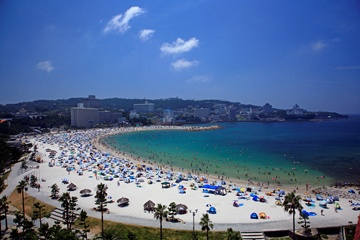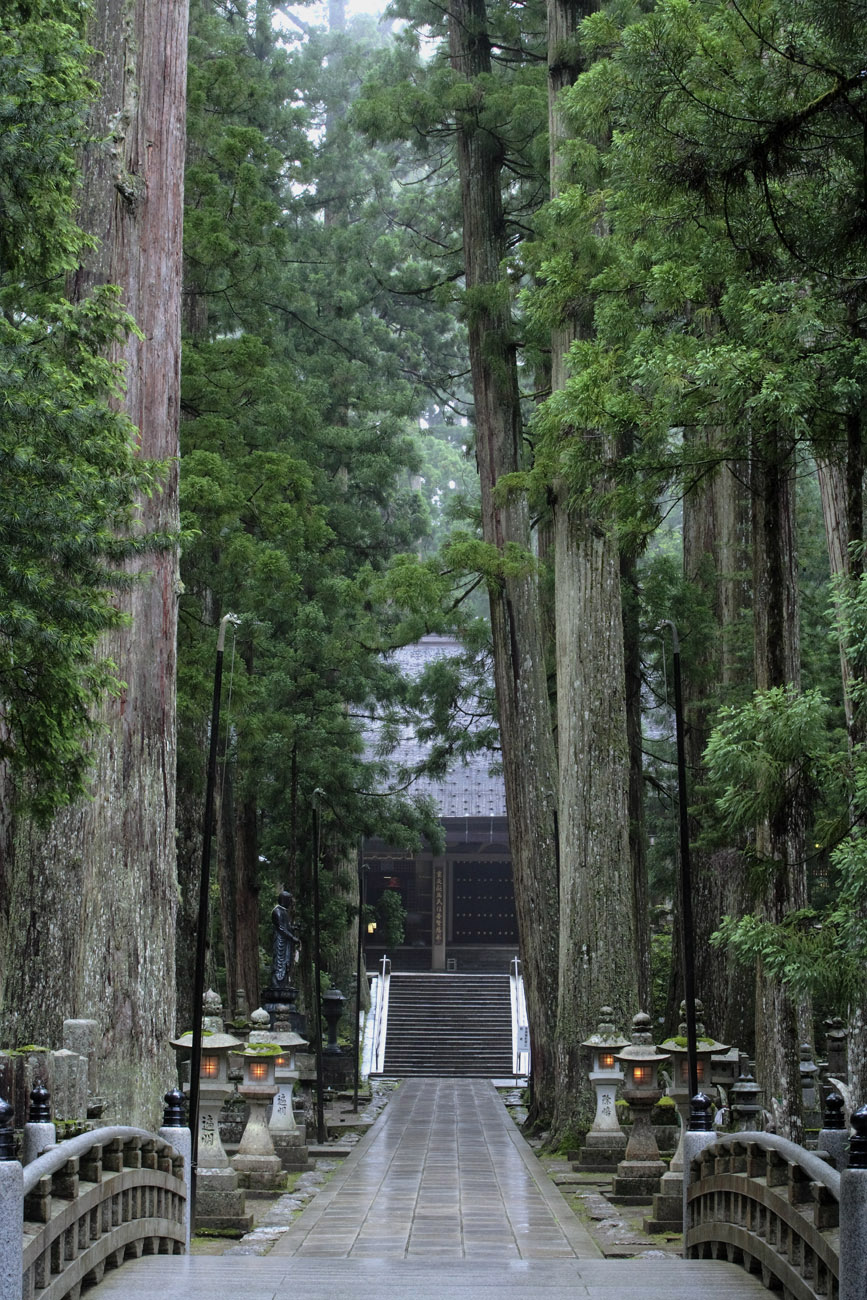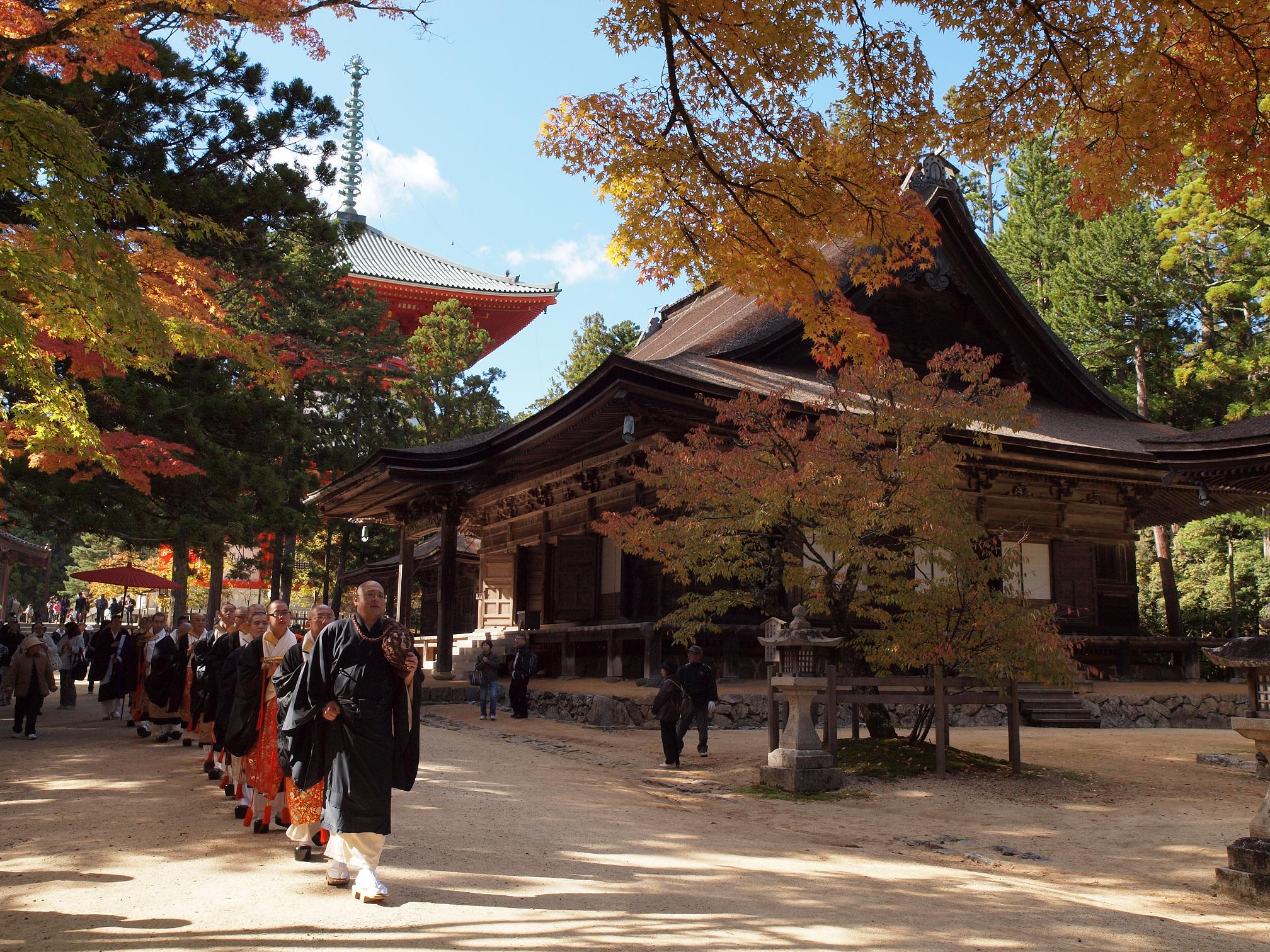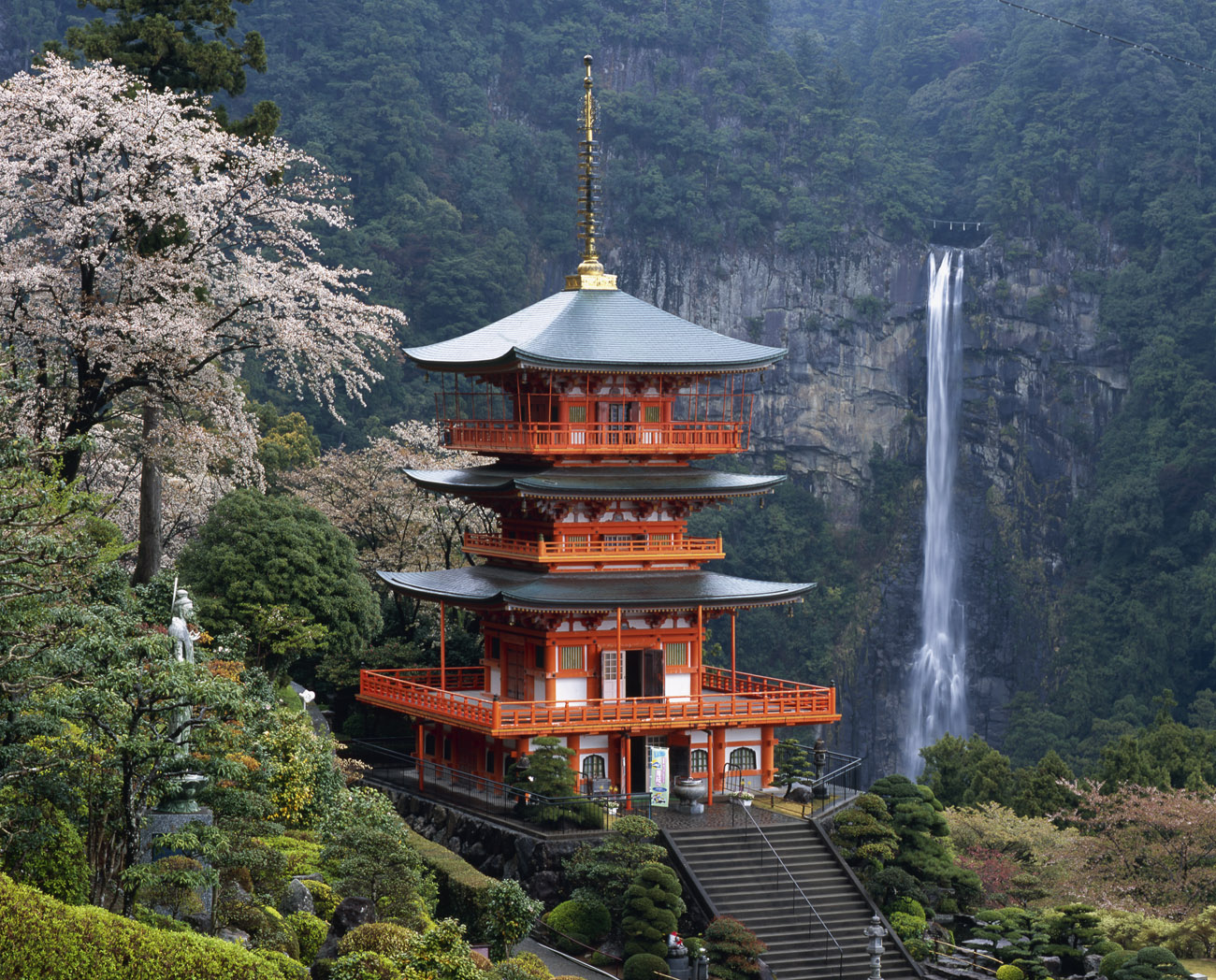Wakayama Prefecture, an introduction...
Overview
 Wakayama
Prefecture is located on the Kii Peninsula, the largest peninsula in
Japan, in the Kansai region which is also home to Osaka and Kyoto. The
estimated population of Wakayama prefecture is 1 million. The
prefectural capital is Wakayama City. Wakayama has a warm climate and
abundant nature, and produces more fruit (including mandarin oranges,
Japanese persimmons, and an apricot like fruit ‘ume’) than anywhere
else in Japan. It also has thriving farming, fishing, and forestry
industries, including fresh seafood such as tuna as well as skipjack
tuna, often grilled and used extensively in many Japanese dishes as a
stock. Wakayama
Prefecture is located on the Kii Peninsula, the largest peninsula in
Japan, in the Kansai region which is also home to Osaka and Kyoto. The
estimated population of Wakayama prefecture is 1 million. The
prefectural capital is Wakayama City. Wakayama has a warm climate and
abundant nature, and produces more fruit (including mandarin oranges,
Japanese persimmons, and an apricot like fruit ‘ume’) than anywhere
else in Japan. It also has thriving farming, fishing, and forestry
industries, including fresh seafood such as tuna as well as skipjack
tuna, often grilled and used extensively in many Japanese dishes as a
stock.
Wakayama Prefecture is also one of Japan's famous
hot springs areas. Many hot springs are located near mountains, rivers,
and the ocean, and are visited by many tourists.
Koyasan,
the Kumano Sanzan (Three Grand Shrines of Kumano), and the pilgrimage
routes that connect them were designated as a UNESCO World Heritage
Site on 7th July, 2004, and are also famous tourist attractions.
Koyasan
 At
Koyasan, visitors can experience the beauty of natural Japan and the
four seasons in the clear mountain air. The grand scale of temples and
shrines that sit at the peak creates an astonishing ascetic ambience
that will make you feel like you have stumbled upon a totally different
world. The religious site of Koyasan, located 1,000 meter above sea
level at the peak of the mountain, has 1,200 years of history. At
Koyasan, visitors can experience the beauty of natural Japan and the
four seasons in the clear mountain air. The grand scale of temples and
shrines that sit at the peak creates an astonishing ascetic ambience
that will make you feel like you have stumbled upon a totally different
world. The religious site of Koyasan, located 1,000 meter above sea
level at the peak of the mountain, has 1,200 years of history.
The
mysterious Koyasan, the three temples and shrines established at the
foot of the mountain (Jisonin Temple, Niukanshobu Shrine, and
Niutsuhime Shrine) and the Koyasan Choishimichi (Stone Marker Path)
that connects them are designated as a World Heritage Site. Within the
mountain are 117 temples, about half of which have shukubo (pilgrims’
lodgings).
If you
wish, you can stay at one of these shukubo and enjoy shojin ryori
(vegetarian Buddhist cuisine), experience early morning scripture
readings with Buddhist priests, and take part in other Buddhist
traditions such as copying sutras or “ajikan” meditation, all of which
lead you from the earthly world to the spiritual world and make your
journey to Koyasan even more profound. Buddhist cuisine), experience early morning scripture
readings with Buddhist priests, and take part in other Buddhist
traditions such as copying sutras or “ajikan” meditation, all of which
lead you from the earthly world to the spiritual world and make your
journey to Koyasan even more profound.
Convenient rental
audio guides are available at the information centre that provide
easy-to-understand historical explanations for 103 points of interest
in English
Kumano area
Known as the “holy ground where the gods dwell” since ancient times, Kumano is the home of many legends and stories that have been passed down through generations. Influenced by Buddhism during
the Heian period (794-1192), the Kumano r egion came to be known as the
“Pure Land” or “pure world where Buddha dwells.” Pilgrimages to this
area were often made by the imperial family and aristocrats from the
10th century onwards. This practice eventually spread amongst the
common people, and became widely known as the “ant processions to
Kumano.” Thereafter, the Kumano faith spread across the nation, and as
a result there are about 3,000 Kumano Shrines in Japan today.
Wakayama prefecture is one of the most attractive area in Japan
where you can feel the history of ancient times. Please see below
for more information! egion came to be known as the
“Pure Land” or “pure world where Buddha dwells.” Pilgrimages to this
area were often made by the imperial family and aristocrats from the
10th century onwards. This practice eventually spread amongst the
common people, and became widely known as the “ant processions to
Kumano.” Thereafter, the Kumano faith spread across the nation, and as
a result there are about 3,000 Kumano Shrines in Japan today.
Wakayama prefecture is one of the most attractive area in Japan
where you can feel the history of ancient times. Please see below
for more information!
Web;
http://www.wakayama-kanko.or.jp/world/english/index.html
|



